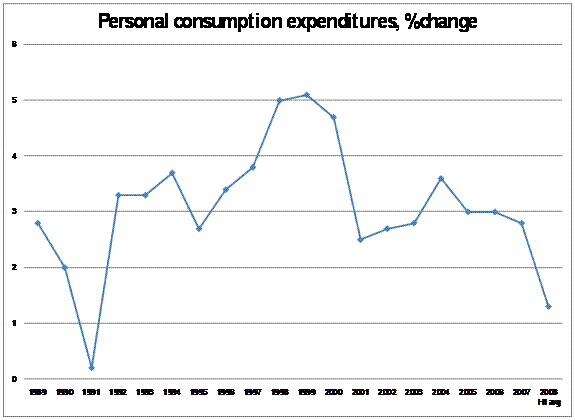Sovereign Wealth Fund Records: In for the Long Haul
This post is by Rachel Ziemba of RGE Monitor, filling in for Brad Setser.
Norges Bank Investment Management, which manages Norway’s $380 billion Government Pension Fund-Global announced Q1 returns last Friday (A more detailed profile from which this piece draws heavily is available at RGE Monitor). Norway’s results tend to be watched quite closely as it is the most transparent sovereign fund, it thus provides a benchmark for measuring other funds. Furthermore, it gives some indication of how funds might have fared in the tumultuous last few quarters - allowing us to start testing how far these funds are stabilizing investors. Stabilizing they might be, but the evidence suggests that many of these funds have sustained significant losses in recent months, highlighting the importance of selecting managers.
In Q1, the GPF-G reported its worst ever quarter, with the fund posting a negative return of 5.6% on its portfolio as calculated in a basket of currencies in which the fund holds assets. Its equity portfolio reported a -12% return (again in international currency). More interestingly and concerningly perhaps, the results show that Norway’s internal managers performed even worse than its benchmark portfolio. As in Q4, excess return from the portfolio managed in house underperformed the benchmark portfolio - this time by about 1%.
Similarly, the investment portfolio of Norwegian reserves reported negative returns in Q1 and underperformed the benchmark portfolio. Despite transfers of almost $18 billion (88b NOK) from oil revenues, the fund was worth less (in a basket of currencies and in Norwegian Krone) in March 2008 than in December 2007. Dollar weakness boosted the value of its large euro and pound holdings (about 60% of the portfolio) meaning that the fund did gain somewhat in dollar terms (though not if one strips out transfers)
Now, given some of the losses sustained in Q1 by a broad range of investors, such results are perhaps not surprising. In fact, any fund that held the equity index would have reported losses. A good thing they have long investment horizons.
Should funds like ADIA and KIA have primarily tracked the index, they too would have reported losses. We imagine that they didn’t though. The results do highlight the importance of picking managers well. Something to think about now that many commentators are suggesting that sovereign funds pick professional managers. But one or two quarters does not a track record make or break (given the long-term nature).
There are a few reasons not to extrapolate too far from Norway’s results. 1) Norway’s asset allocation is different from an ’average’ sovereign wealth fund portfolio, being more exposed to fixed income than most funds and with no exposure to alternative assets. It also has less exposure to emerging markets and invests only in a narrower group of EMs. 2) Norway tends to take small stakes, with the average stake size less than 1% of the equity in question. Its different management style means it might be less exposed to individual stocks. 3) Finally, Norway has an official policy of rebalancing its portfolio, that is new inflows will be targeted towards the weakest sectors and regions. This policy had the net result of directing most of Norway’s inflows to fixed income during the equity boom and likely means most of the $18 billion in Q1 transfers accrued to the equity allocation. It also means that transfers from oil revenues not capital gains accounted for much of the Norwegian funds growth in 2005-7.
UPDATE: Thanks to Brad for noting that the previous chart did not distinguish between equities and fixed income. It is fixed below.
However the GPF-G is a long-term investor. Since its creation in January 1998, there has been a cumulative positive excess return of 5%, even including the last two quarters.
Norway is not alone in reporting negative investment returns in recent quarters. The funds of Alaska, Alberta reported losses. In part, like Norway, a strong Canadian dollar depressed the value of foreign currency (especially U.S.) holdings.
The funds of New Zealand and Australia took multi-billion dollar hits and the Canada pension plan, French pension reserve fund and Irish reserve fund and the investment portfolio of Hong Kong’s returns also reported weaker returns. So too did many other institutional investors especially in Europe, which many funds resemble in asset allocation. Calpers, the largest US pension funds noted that it began repositioning its portfolio a year ago to be more defensive – and launched new investments in commodities, timberland and inflation-linked bonds. Although long-term horizons may mean these funds can weather short-term volatility, their transparency may mean sustained losses could raise concerns from the public.
Large funds like GIC, ADIA and KIA don’t report their returns or holdings. Some work Brad and I have done suggests that they likely had significant losses - given their heavy exposure to equities.
Yet with oil flows, funds of oil exporters are only growing, making allocation decisions only more important – as more money is chasing similar opportunities. Norway’s transfers ($55b last year and $18b last month) are an indication. Collectively the funds of Abu Dhabi and Kuwait likely added at least that much. Recent data from Kuwait’s central bank suggests the government added around $38 billion in foreign portfolio and direct investment last year. Not all of that went to the Kuwait investment Authority but likely a lot did . In fact, it might hint at an asset allocation shift, net deposits of the general government were much lower in 2007, perhaps an indication of Kuwait’s asset allocation shift?
 Online Store
Online Store

